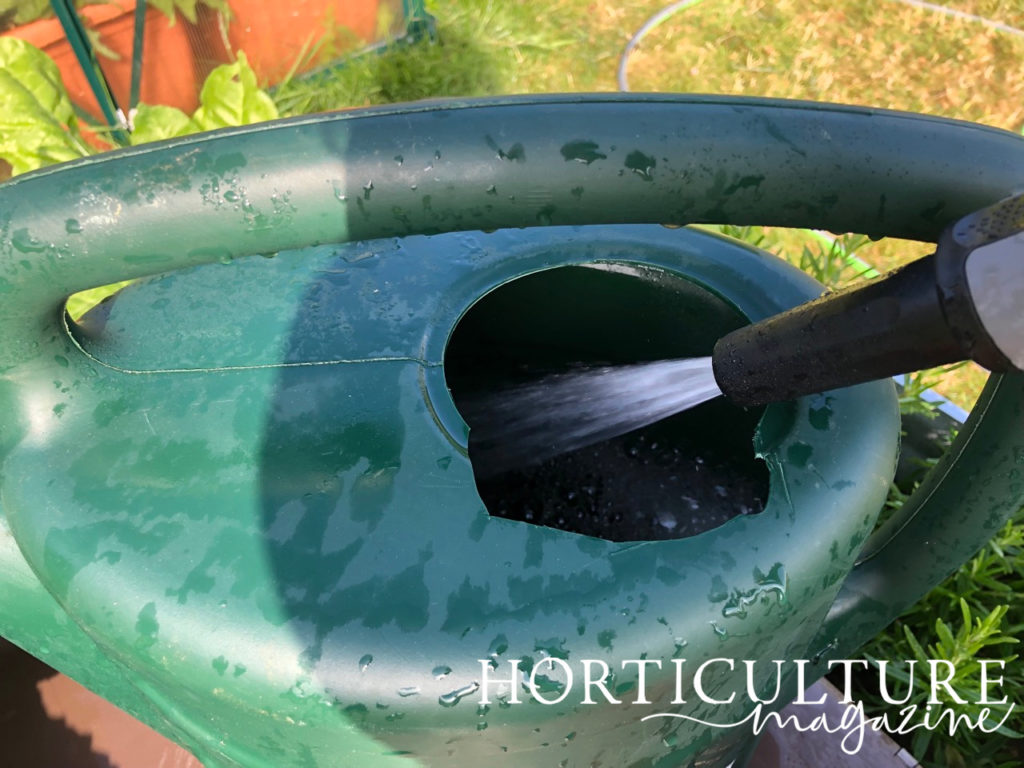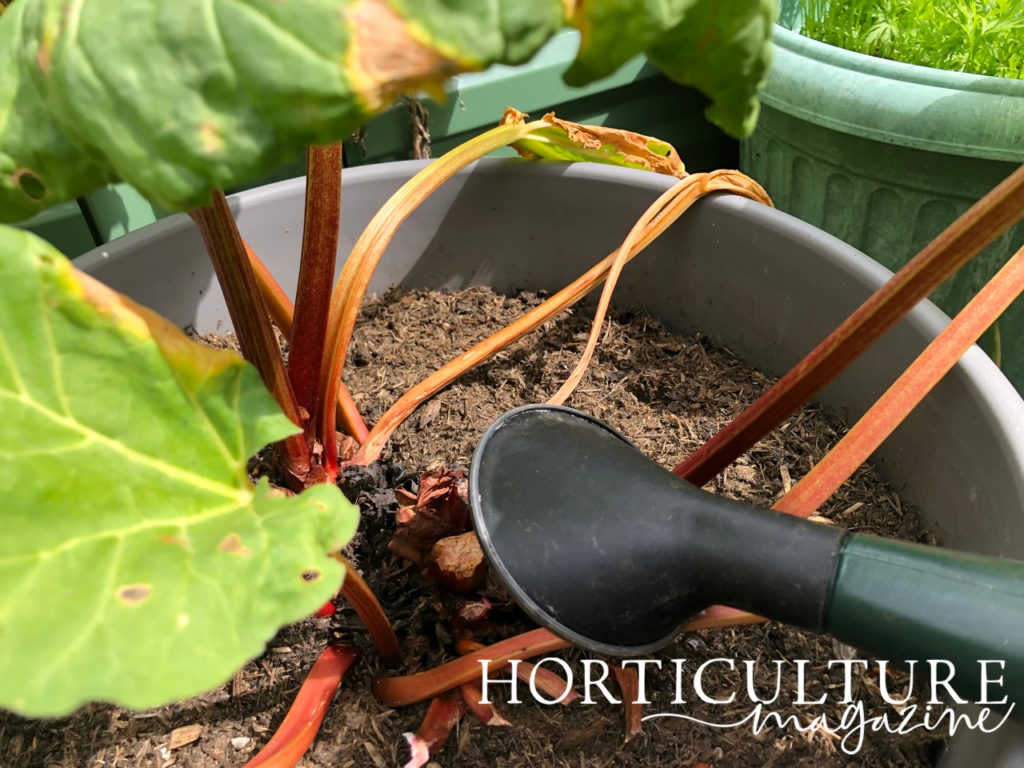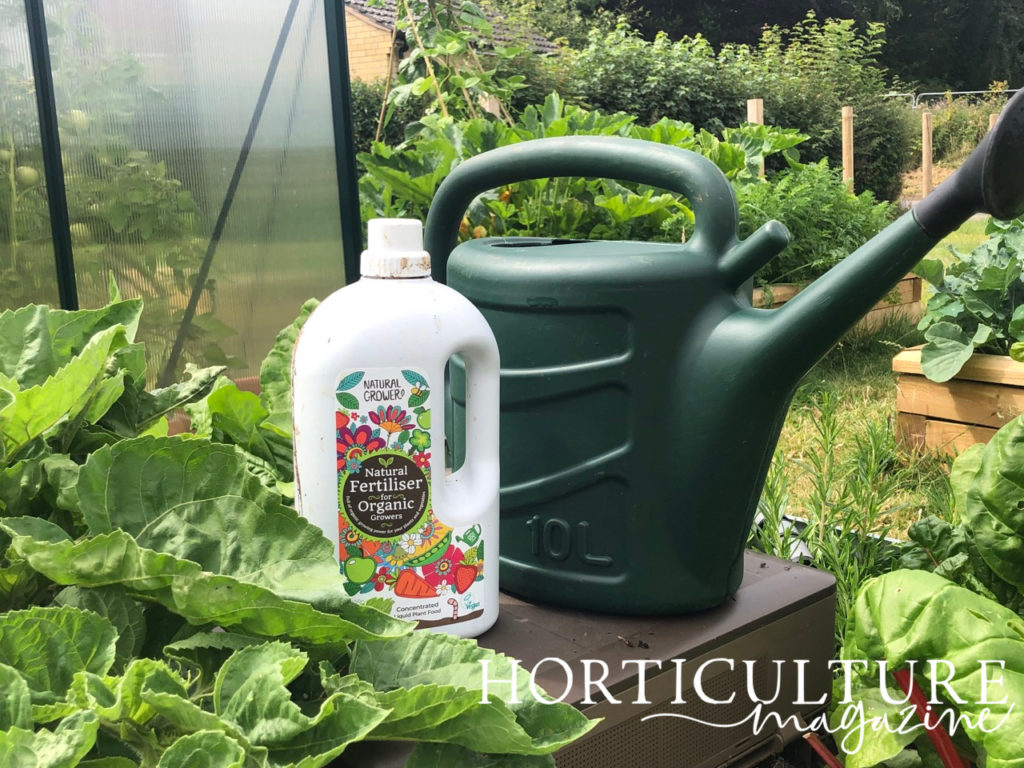While Rainwater Should Be Enough For Rhubarb, It Is A Medium-Heavy Feeder

PERENNIALS > RHUBARB > FEEDING
Reviewed By DAN ORI

Dan has over 27 years’ under his belt caring for plants and gardens. Working as a Horticultural Instructor and Consultant, he draws on a diverse range of experience that includes working as a Head Gardener, Tree Surgeon, Garden Centre Trouble Shooter, and writer of academic papers. Dan has a Level 3 Diploma in Horticulture and is currently a candidate for the RHS’s most prestigious award – The Master of Horticulture.
Contributions From EMILY CUPIT

Emily is a Gardening Writer, Photographer and Videographer from Derbyshire, UK. She is the Founder of Emily's Green Diary - a community of more than 75,000 people who share in her gardening journey.
Rhubarb is a delightful vegetable that can bring colour to your garden beds as well as a delicious harvest.
If you’re wondering how to get the best out of your rhubarb plants, you might be wondering if you can feed them to help improve growth and yields.
In this article, I share my top tips for fertilising and watering rhubarb growing in your garden.
Watering
Rhubarb requires free-draining soil but also soil that is continuously moist.
You will have an easier time of irrigating this plant if you get your soil right.

One thing you could do is to plant rhubarb in ridges or mounds to protect the crown from getting soggy.
Water young plants regularly with 2-3cm of water per week.
Established plants do not require as much water and in many regions of the UK, rainwater will be all the water they need.
During dry spells and in hot weather, you will need to water rhubarb regardless of rain.

As a general guideline, if the soil surface is dried out, you should provide more water.
You do not need to water the dormant crowns in winter but be sure that they do not stay dry for a prolonged period.
Feeding
First, mulching rhubarb plants will lock in moisture and suppress weeds.
In late March to early April, apply a 5cm layer of mulch but be sure to leave an open ring around the crown.
Rhubarb is a medium-heavy feeder but do not fertilise this plant in its first year.
For the second year onwards we suggest that you avoid chemical fertilisers and opt for organic ones to minimise risk to the crown as it is nearly at the soil surface.

Apply fertiliser once in late March to early April.
Sprinkle 2-3 pinches of granular fertiliser around the plant and lightly work it into the soil or use an organic liquid plant feed around the base.
“Mulching can be the easiest way to feed your rhubarb,” says Master Horticulturist Dan Ori.
“In autumn, I cut back all the growth to the base and apply a good layer of rich organic material like well-rotted garden compost.
“Care should be taken when mulching not to cover the crown, as this can encourage rot.”

